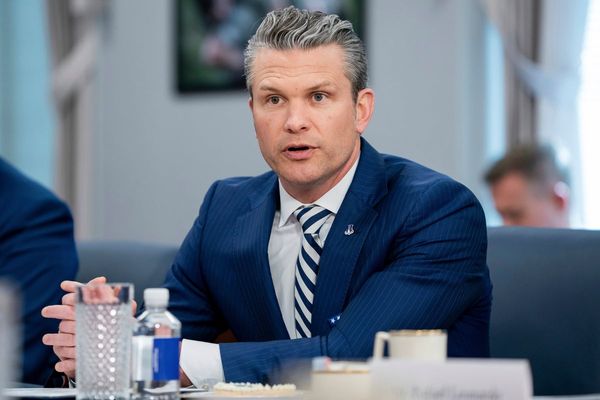Prince Harry has long blamed the mercenary media for his mother, Princess Diana, dying in a 1997 car crash in a Paris tunnel, while Egyptian billionaire Mohamed Al Fayed was convinced that Prince Philip ordered British secret agents to engineer the fatal collision, which also killed his son, Dodi.
But however much pursuing paparazzi and other significant factors contributed to the crash, a recent article emphasizes that Diana’s ability to survive had been entirely in her control.
The former Metropolitan Police commissioner who headed a special inquiry into Diana’s death said in a new interview that she, her companion Dodi Al Fayed and their driver might still be alive today if they had followed a basic car safety measure — they should have been wearing seat belts.
“There are a large number of issues to this kind of crash. If you pulled away one aspect of this crash — one link in the chain — it would not happen,” said John Stevens, who headed the inquiry which ended in 2008, in a new interview with the Daily Beast.
“And it has been proven that if they’d worn their seat belts they would have survived, even with the desperate condition of that car,” Stevens continued. “That’s what the experts say.”
Diana’s death is the topic of “Diana Investigations,” a new docuseries that premiered last week on Discovery+, the Daily Beast said. The series looks at all the evidence probed by French authorities and by Operation Paget, the inquiry Stevens headed. Stevens also is interviewed for the show.
Stevens’ assertion about the seat belts was backed by U.K.’s top forensic pathologist, Dr. Richard Shepherd, who was tasked by Operation Paget with examining the chest, head, arm and other injuries that the Diana suffered in the impact.
“If only she had been wearing a seat belt,” Shepherd wrote in his book, “Unnatural Causes,” which was excerpted in the Daily Mail in 2019. “Had she been restrained, she would probably have appeared in public two days later with a black eye, perhaps a bit breathless from the fractured ribs and with a broken arm in a sling.”
Operation Paget took nearly three years, cost $14 million and involved 14 police officers and testimony from nearly 300 witnesses, the Daily Beast reported. It produced a detailed 832-report that concluded that Diana’s death was a “a tragic accident,” not a conspiracy hatched by the media or the royal family.
At the conclusion of the inquiry, Stevens said he met with Harry and Prince William in an “emotional” meeting, at the end of which they both expressed satisfaction with its conclusions.
The Mercedes that Diana was riding in smashed into a pillar of the Alma Tunnel in Paris due to a combination of the driver, Henri Paul, being intoxicated and on prescription drugs and a posse of paparazzi aggressively chasing the vehicle on motorcycles, the Daily Beast said. Paul entered the tunnel, which has a posted speed limit of 30 mph, at 70 mph, according to reports.
Following a six-month inquest in 2008, a jury of six women and five men voted 9-2 to rule that the crash was caused by “grossly negligent driving,” The Guardian reported at the time.
The jury was unanimous in finding that the deaths of Diana, Al Fayed and Paul were “caused or contributed to by the fact that the deceased (were) not wearing seat belt(s) … and the fact that the Mercedes struck the pillar in the Alma Tunnel rather than colliding with something else,” The Guardian added.
“We are unanimous on that, sir,” a jury forewoman said about the seat belts to the judge presiding over the inquest.
In the United States, it’s become well-established that wearing a seat belt is the most effective way to prevent death and serious injury in a traffic accident, according to the Centers for Disease Control and Prevention. Some 51% of passengers killed in car crashes in 2020 were not wearing seat belts, added the National Highway Safety and Transportation Administration.
It’s not known why Diana, Al Fayed or Paul were not wearing seatbelts. Diana was in Paris that August night with Al Fayed after vacationing with him on his yacht in the Mediterranean, as part of a high-profile, whirlwind romance.
Oddly, Diana’s bodyguard, Trevor Rees-Jones, the sole survivor of the crash, was wearing a seat belt as he sat in the front seat ahead of her, according to Shepherd, the pathologist.
“Bodyguards don’t usually wear seat belts as they restrict movement, but evidently Rees-Jones, maybe because he was alarmed by Henri Paul’s driving, or maybe because he realized an impact was likely, put on his belt at the last minute,” Shepherd wrote in the Daily Mail excerpt.
Shepherd wrote that Diana’s injury was “very small” but “in the wrong place.” To the first responders, she seemed stable, but she actually was slowly bleeding into her chest. Shepherd conceded that there were multiple “if only” factors that could have prevented her death.
“If only she had hit the seat in front at a slightly different angle,” Shepherd wrote. “If only she had been thrown forward 10 mph more slowly. If only she had been put in an ambulance immediately.”
But, Shepherd concluded, “the biggest if only, in Diana’s case, was within her own control.”







